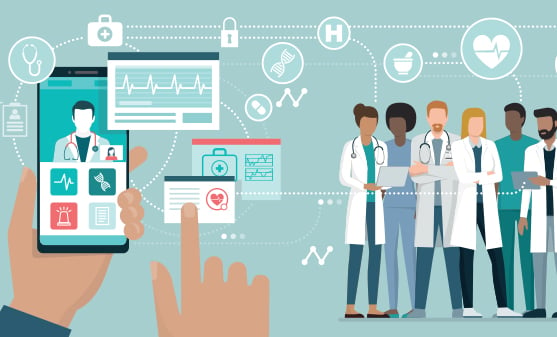Understanding consumers’ healthcare needs facilitates greater connection
Improved Healthcare Comms Boosts Consumer-Provider Interaction

What do consumers want from healthcare providers and systems, and how can better communications help?
A perusal of articles, recent surveys and studies will reveal several consistent consumer desires to any reader.
Consumers want and expect personalized everyday experiences.
Consumers want ease of access to their provider and to helpful information.
Consumers want to have cost transparency.
In one recent study, the Urgent Care Association of America and Solv surveyed 1,386 Americans about their needs and attitudes when engaging with the U.S. healthcare system, to understand more about these issues.
Some of the findings:
- Three out of four consumers will not choose a doctor who can’t see them within one week.
- Providers need to make costs understandable. Consumers want to know how much they’re going to pay for care before the bill comes and exactly what medical services they are paying for.
- Consumers want to book online. The top technology requested by consumers is something that restaurants, airlines, hair salons and yoga studios have had for more than a decade—easy online and mobile booking.
One of the conclusions of the study is that consumers today expect a level of service and convenience that does not often exist when engaging with healthcare.
In addition, other studies have concluded that consumers are very comfortable engaging with their physicians digitally.
So, what kind of communications do consumers want in healthcare and when do they want to interact with their providers?
The average consumer only spends about three hours in healthcare service a year, so it’s probably not when they are in the provider’s office. More than likely, it’s not when the provider pushes out their marketing efforts either. Outbound marketing efforts will not enable healthcare providers to own the consumer experience.
But they can own the moment of interaction. That, however, requires the brand to be present and available when the consumer wants to interact.
What are some ways healthcare providers can adopt and follow the same aggressive communications consumer brands have adopted?
- Be present in the platforms that consumers use. Marketers need to focus on the most relevant and high-use platforms their customers use like Facebook, Twitter, LinkedIn and even Snapchat and Instagram, among others. Every tool is different and needs a sub-strategy for their use.
- Be consistent in all forms of communications. The consumer needs to see you in these platforms before they will trust your engagement. Have patience.
- Be transparent, which also means be responsive. The healthcare industry is not known for their responsiveness and transparency, which is critical to building trust in communications.
- Provide quality, easy-to-understand information and speak directly to the customer’s needs. The communications can’t all be about pushing out information. Learn what is important to the consumer and deliver that information in a compassionate and meaningful way.
Just as in all other consumer segments, in healthcare the consumer defines the relationship. The brand’s job is to deliver on it.
Additional Source: Modern Healthcare Strategic Marketing Conference 2018
Need help finding a path to Healthcare marketing success? Contact our Business Development Director.

